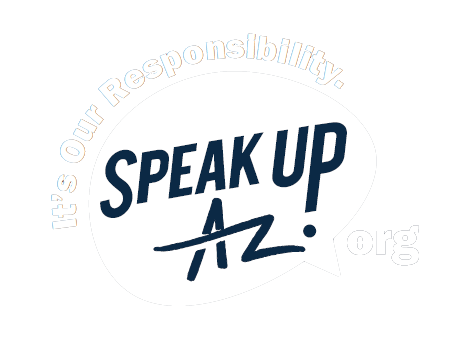One Night for One Year: Point-In-Time Efforts Ensure Homeless Lives Count

Under the shelter of a grocery store, a couple sits on a bench, waiting for the rain to stop. They didn't have a dry place to sleep the previous night, though the sun has just started to rise. Rather than sleeping, they moved around, attempting to find shelter and avoid the rain. Now, they wait a little longer before the local library opens for the day, where they will find a warm, dry place.
On January 23, 2024, staff members from the Arizona Department of Economic Security (DES) volunteered in the early morning hours to count unsheltered individuals like this couple for the annual Point-in-Time (PIT) Homelessness Count. As they spoke to the couple, they gave them hot cocoa, granola bars, water bottles, and, most importantly, information about available resources.
During the count, volunteers canvass the state through pre-assigned areas to count the number of individuals experiencing homelessness through observation or interaction. They also speak to them about their needs and offer information about community organizations that could assist them. In some cases, volunteers from organizations that work directly with people experiencing homelessness can sign up individuals for services right on the spot.
The DES Homeless Coordination Office plays a central role in the state's response to homelessness, but colleagues from other areas of the Department are also eager to volunteer for the PIT count as well. Laura Guild has been volunteering for the count since it began.
One particular year, after driving for hours in the dark in the early morning in north Phoenix, Laura and her team saw a woman taking shelter against the wall of a funeral home.
"That's the refuge she was taking for the night," said Laura. "I still remember that image, of what people have to do to survive night to night when they're living on the streets."
On another occasion, the team engaged with a woman in a parking lot who spoke at length about her struggles. After mentioning her need for shoes, Laura's coworker realized that she had an extra pair of shoes in her car, and donated the shoes to the woman.
"Always, when you connect with people… you can't walk away from that and not be affected," said Laura.
Statewide Homeless Coordination Manager, Erin Cochran, who led the DES team this year, believes the count is an eye-opening experience for the volunteers.
"This is a unique chance for DES team members to experience firsthand the systemic barriers that exist for those sleeping on the streets in getting properly connected with assistance and resources," Erin said, whether it's lacking a cell phone, or lacking transportation to the nearest office, they can get help. In the case of the couple, the nearest office was nearly 10 miles away from the volunteers' assigned area.
While the PIT count method has limitations, it is the only consistent national and statewide measure of homelessness, which informs policy, resource and programmatic decisions. When it's time for communities and organizations to request funding, they need data to show the need and potential impact. The count is the primary source of numerical data for the entire year, which is incorporated into the Annual Homelessness Assessment Report reviewed by Congress. The impact of the data can last for months or years, as government funding is not usually allocated immediately. This year's data will be available in May 2024.
While the opportunity to volunteer in this year's count has passed, there are other ways for individuals to get involved. By contacting your local shelter or other community organizations serving individuals experiencing homelessness, you can find opportunities to volunteer or donate. The Healthy Giving Council is another resource to help you find opportunities to give. Your support makes a huge impact upon the lives of unsheltered individuals and families. Learn more about how DES is involved in providing homeless services across the state by visiting our Homeless Services website.

